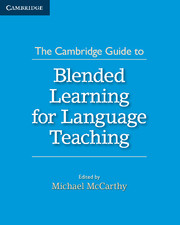Chapter 14 - Adaptive Learning
Published online by Cambridge University Press: 22 September 2021
Summary
INTRODUCTION
As discussed throughout this book, blended learning (BL) has become an increasingly important part of modern education, from schoolchildren to higher education and adult learners. In a BL environment, students learn in part at their own time and pace through instruction and content delivered online, as well as learning in part through supervised face-to-face instruction in a school or higher education context (Garrison and Vaughan, 2008 ; Graham, 2006). This blend can vary in the degrees of face-to-face and online instructional content depending on the subject matter, students and instructor.
One of the key opportunities of BL is to support better personalisation for the range of individual differences which students bring to learning situations. For example, students may vary in terms of their aptitudes, interests and motivations (Cordova and Lepper, 1996 ; Grant and Basye, 2014). To help students achieve their optimal learning potential, educators must be able to offer personalised learning experiences that customise the instruction given to students to meet their individual needs and goals for learning. Such differentiation of instruction must then address each student's ability, interest and motivation.
Personalised learning in instruction development does not necessarily require technology (e.g., Clarke and Miles, 2003), but the arrival of modern computerised learning environments increases the potential for individualisation, both through providing better data to teachers and instructional designers, and by making it economically feasible to design student models and interventions that may apply to a relatively small proportion of students (Ben-Naim et al., 2007 ; Graesser et al., 2007 ; Koedinger and Corbett, 2006 ; Mayer et al., 2004 ; VanLehn, 1996). In integrating technology within a traditional classroom instruction model, BL takes advantage of these opportunities for personalised learning, while maintaining the affordances of classroom activities. Within well-implemented BL, students are provided with technology that enables them to learn the material at their own pace, lets them individually experience success and failure with the material and informs them about their learning progress. The affordances of such technology include capturing student learning experiences in real time and reporting on students’ performance to the teacher, giving the teacher opportunities to provide more immediate feedback relevant to the students’ learning state.
- Type
- Chapter
- Information
- The Cambridge Guide to Blended Learning for Language Teaching , pp. 234 - 247Publisher: Cambridge University PressPrint publication year: 2015

